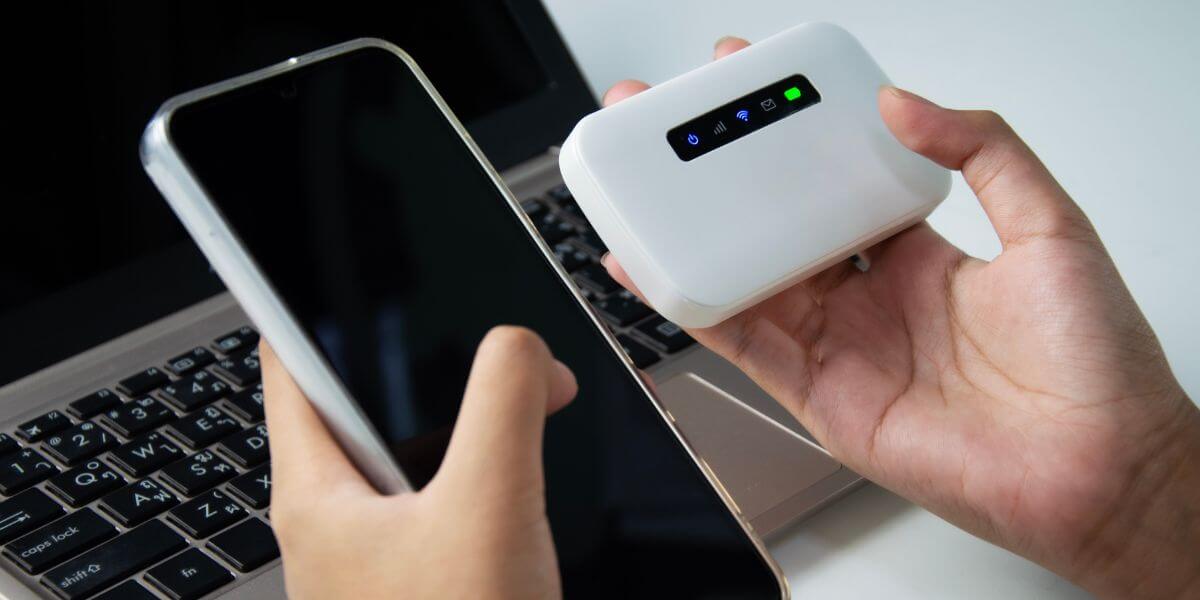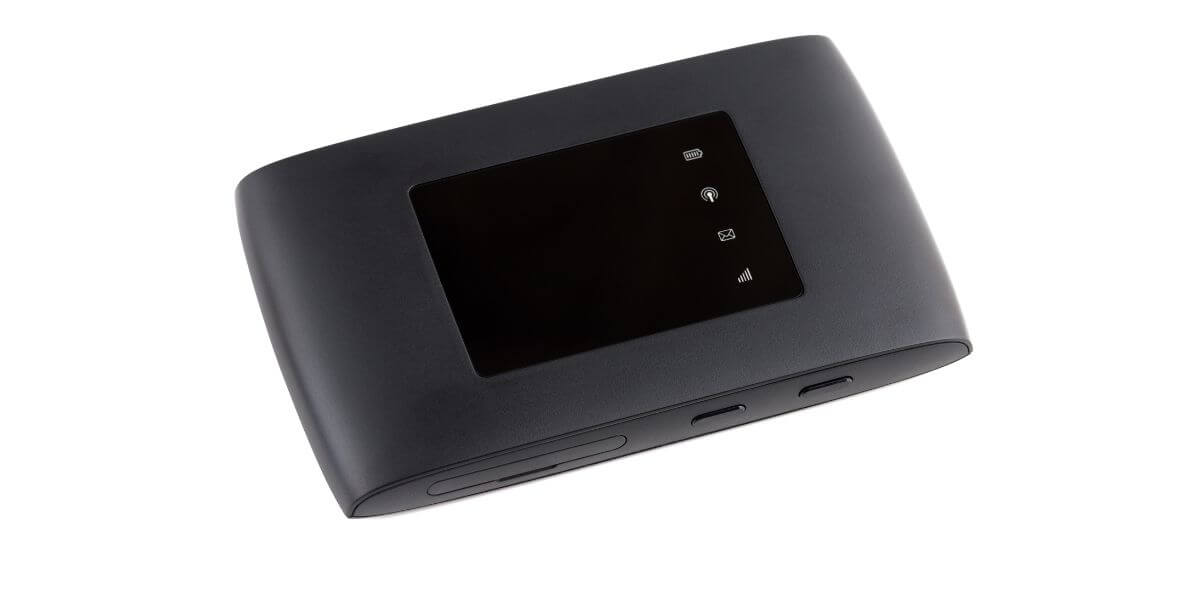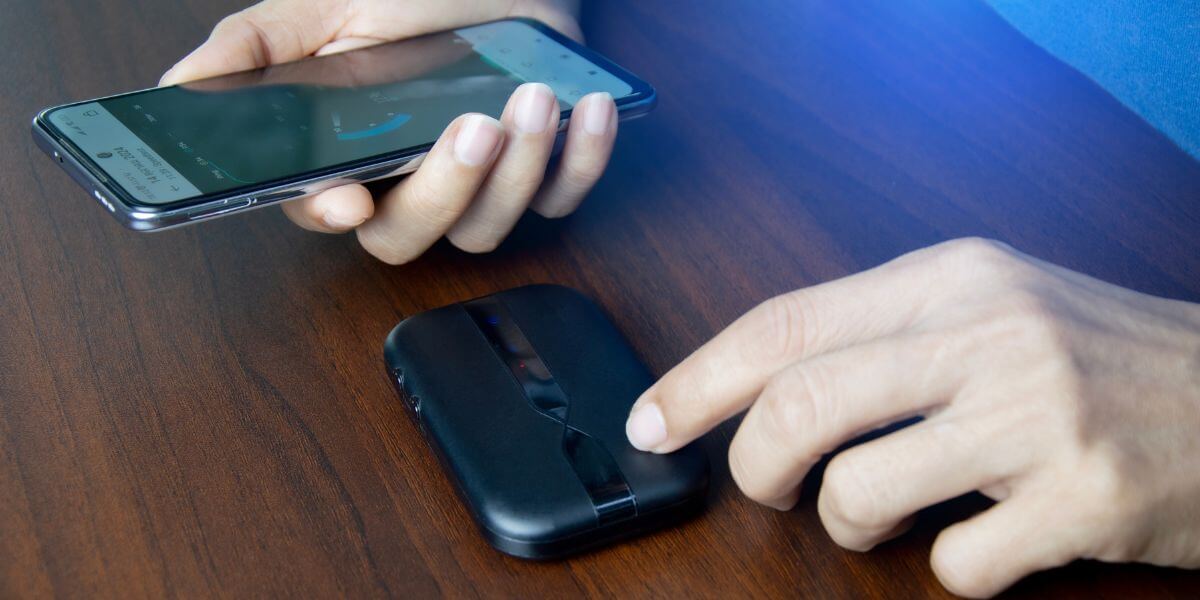Lower your internet bill
61% of people overpay for their internet.
Are you one of them?
Unlock exclusive offers in your area!
Call now
[tel]Enter zip code
1 Star is Poor & 5 Stars is Excellent.
* Required
Written by Sam Watanuki - Pub. Aug 20, 2025 / Updated Sep 02, 2025
Table of Contents
Are you happy with your Internet service?
About the author
When you need reliable internet access on the go, Verizon hotspots have evolved from simple data-sharing devices into sophisticated mobile internet solutions. As one of the nation’s leading internet providers, Verizon has continuously expanded its hotspot offerings since launching its first mobile broadband devices in 2008 [1], now providing some of the most reliable mobile internet options available today.
The mobile hotspot market has transformed dramatically over the past decade, particularly with the rollout of 5G networks starting in 2019 [2]. What once required bulky equipment and limited data allowances now offers near-home-internet speeds with generous data packages, making Verizon hotspots a viable alternative for many connectivity needs.
61% of people overpay for their internet.
Are you one of them?
Unlock exclusive offers in your area!
Call now
[tel]Enter zip code
Verizon hotspots create a secure Wi-Fi network using cellular data, allowing multiple devices to connect to the internet simultaneously. Unlike public Wi-Fi networks that can be unsecured and unreliable, Verizon hotspots provide a private connection backed by the carrier’s extensive cellular infrastructure.
These devices work by converting cellular signals (4G LTE or 5G) into Wi-Fi signals that your laptops, tablets, and other devices can use. Think of it as having a personal internet tower in your pocket — wherever Verizon has cellular coverage, you can create your own internet access point.
Verizon hotspots support Wi-Fi 6 technology, which significantly improves speed and device capacity compared to older standards. This advancement, implemented across Verizon’s device lineup, allows for faster file transfers and better performance when multiple devices are connected.

Should You Use Your Phone’s Hotspot or Get a Dedicated Device?
The choice between using your smartphone’s personal hotspot feature versus purchasing a dedicated device depends on your specific needs and usage patterns. Your Verizon phone’s built-in hotspot capability offers convenience and eliminates the need for additional hardware, but comes with notable limitations. Phone hotspot advantages include:
Dedicated device benefits include:
According to Verizon’s 2024 usage data, customers who rely primarily on mobile internet for work or entertainment typically benefit more from dedicated devices, while casual users find phone hotspots sufficient for occasional connectivity needs [3].
Verizon currently offers six main hotspot devices, ranging from budget-friendly options to premium models with advanced features [4]. The Inseego MiFi X PRO 5G UW stands out as the top choice for most users, priced at $349.99 with financing available at $9.72 per month. This flagship device offers:
For budget-conscious users, the Verizon Orbic Speed Mobile Hotspot at $79.99 provides essential connectivity with 4G LTE speeds and 12-hour battery life, though it’s limited to 10 device connections.
Mid-range options include the TCL LINKZONE 5G UW ($299.99) and Orbic Speed 5G UW ($299.99), both offering 5G connectivity with varying battery performance and device capacity. The TCL model includes reverse charging capability, allowing it to function as a power bank for other devices.
Verizon’s hotspot data plans follow a tiered structure with four main options, designed to accommodate different usage levels and budgets [5]. Internet prices for these plans vary significantly based on whether you bundle with existing Verizon services.
The significant price reductions apply when you bundle hotspot plans with Verizon’s Unlimited Ultimate mobile plan, which provides up to 50% off connected device plans. This bundling strategy reflects the industry trend toward integrated service packages, helping customers save money while simplifying billing.
For context, these prices position Verizon competitively within the mobile internet market, though a proper internet comparison with other providers reveals varying value propositions depending on coverage areas and data needs.

How Much Hotspot Data Do You Actually Need?
Knowing your data needs is important for choosing the right plan and avoiding costly overage fees. Based on current usage patterns and streaming quality standards, here’s how different data allowances translate to real-world activities: 15GB monthly allowance supports:
50GB monthly allowance accommodates:
100GB and above enables:
The Federal Communications Commission’s 2024 broadband usage report indicates that the average American household consumes 380GB monthly across all devices [6]. While hotspot usage typically represents a fraction of total consumption, heavy users should consider the Premium plan or explore whether Verizon’s 5G Home Internet service might better serve their needs.
When comparing internet providers, Verizon’s hotspot offerings compete primarily on network coverage and 5G availability rather than price alone. Verizon operates one of the nation’s most extensive 5G Ultra Wideband network, covering over 200 million people as of 2024.
Compared to other major internet providers offering mobile solutions, Verizon typically commands premium pricing but delivers superior rural coverage and network reliability. T-Mobile often offers more competitive pricing, while AT&T provides comparable coverage in many metropolitan areas.
The best internet providers for mobile connectivity vary significantly by location, making it essential to compare internet providers based on coverage maps and local network performance. Rural users may find Verizon provides the most reliable option, while urban customers may benefit from comparing multiple carriers. To find the best internet in your area, consider factors beyond pricing:
Optimizing your Verizon hotspot performance involves both technical settings and usage strategies. Position your device near windows or elevated locations to improve cellular signal reception, as even small improvements in signal strength can significantly impact data speeds. Battery optimization strategies include:
Security best practices involve:
Monitor your data usage through Verizon’s My Verizon app to avoid unexpected overages. The app provides real-time usage tracking and can send alerts when approaching plan limits, helping you manage costs effectively.
For families or small businesses requiring multiple connections, consider the Premium plan’s capacity for 10+ devices rather than purchasing multiple smaller plans. This approach often provides better value and simplified management.

Staying Secure and Connected
When evaluating whether to compare internet plans from different providers, remember that mobile hotspots serve specific use cases but shouldn’t typically replace home broadband for primary residence internet needs. However, they excel for travel, backup connectivity, and areas where traditional broadband infrastructure isn’t available.
Enter your zip code here to compare local providers and find the best internet options in your area.
While Verizon’s premium hotspot plans offer substantial data allowances, they’re generally not designed to replace home broadband entirely. The average household uses 380GB monthly, exceeding most hotspot plan limits. However, for light users or temporary situations, the Premium plan’s 150GB might suffice. Consider Verizon’s 5G Home Internet service for a true home broadband replacement.
Verizon 5G Ultra Wideband networks can deliver download speeds of 300-400 Mbps on compatible hotspot devices, with peak speeds potentially reaching 1 Gbps in optimal conditions. Standard 5G typically provides 100-200 Mbps, while 4G LTE averages 20-50 Mbps. Actual speeds vary based on location, network congestion, and device capabilities.
After reaching your plan’s high-speed data allowance, Verizon typically reduces speeds to approximately 6 Mbps rather than charging overage fees. This “unlimited" slower speed allows continued internet access for basic tasks like email and web browsing, though streaming and large downloads may be impacted. You can purchase additional high-speed data if needed.
Verizon hotspots can work internationally, but require specific international data plans to avoid expensive roaming charges. International daily passes typically cost $5-12 per day depending on the destination [7]. For extended international travel, consider local SIM cards or international-specific mobile internet plans, as domestic hotspot plans don’t include overseas data allowances.
[1] Verizon. “The history of Verizon Communications."
[2] Telco Magazine. “Here are the 5G rollout leaders – but who is falling behind?"
[3] Verizon. “Consumer Connections Report."
[4] Verizon. “Shop Hotspots and Internet Devices."
[5] Verizon. “Mobile Hotspot plans."
[6] FCC. “Internet Access Services: Status as of June 30, 2024."
About the author
Congratulations, you qualify for deals on internet plans.
Speak with our specialists to access all local discounts and limited time offers in your area.
[tel]61% of people overpay for their internet.
Are you one of them?
Unlock exclusive offers in your area!
Call now
[tel]Enter zip code